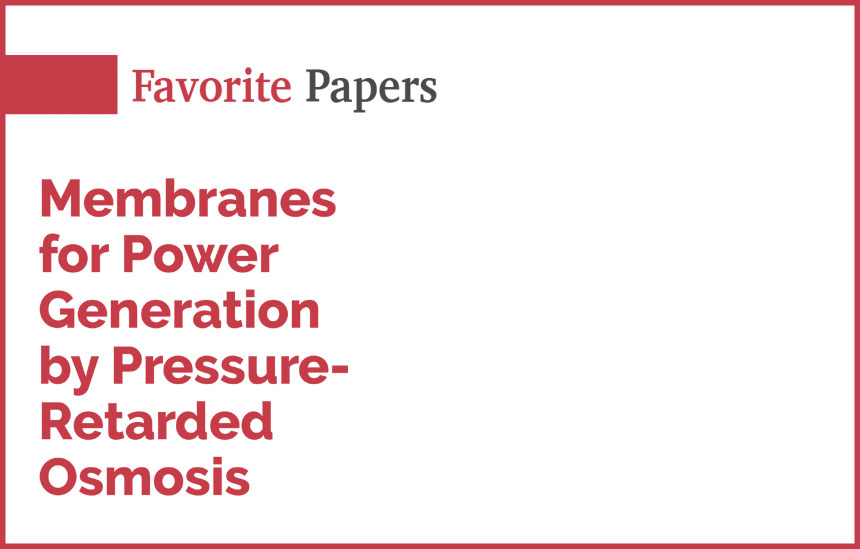Published on IDRA Global Connections Winter 2021 Issue
By K.L. Lee et al. K.L.Lee, R.W.Baker, H.K.Lonsdale “Membranes for power generation by pressure-retarded osmosis” Journal of Membrane Science, Volume 8, Issue 2, 1981, Pages 141-171. https://doi.org/10.1016/S0376-7388(00)82088-8
Nominated by: Menachem Elimelech, Department of Chemical and Environmental Engineering, Yale University
menachem.elimelech@yale.edu
https://elimelechlab.yale.edu/menachem-elimelech
K.L. Lee et al. presented an excellent overview, derivation, and experimental results for the behavior of water flux through osmosis membranes, clearly delineating the regimes of reverse osmosis (RO), pressure retarded osmosis (PRO), and forward osmosis (FO). Although the title of the
paper indicates only PRO, the authors described in detail the entire three regimes of RO, PRO, and FO. The derivation of the equations is given in detail and in a simple and clear way that is understandable at the undergraduate level.
Notably, one of the authors, Harry Lonsdale, was one of the pioneers in the development of the RO membrane technology. He had numerous
other pioneering papers on the chemistry and properties in RO membranes. Lonsdale was also the founder and first editor of the Journal of
Membrane Science and later had a political career in the State of Oregon. Another author of this classic paper, Richard Baker, is the founder
of Membrane Technology and Research, Inc. (MTR) and the author of the authoritative book “Membrane Technology and Applications.”
When we started our research on FO at Yale in 2002, we were puzzled by the very low water fluxes obtained in the lab with commercial RO membranes. Luckily, the graduate students in my lab immediately came across this paper which clearly described the phenomenon of internal
concentration polarization and showed the complete derivation of the equations for predicting the water flux. We also referred to this paper
when we carried out research on PRO as the paper clearly explained the relationship between hydraulic pressure, water flux, and maximum
power density in PRO.
I have used this paper in my undergraduate course on environmental transport processes to illustrate the establishment of an internal
concentration polarization profile within the membrane support layer under the action of convective and diffusive mass transfer. I have
also referred to this paper in my graduate-level course on environmental physicochemical processes to illustrate internal concentration polarization as a performance-limiting phenomenon in membrane processes.
The paper has been very useful to researchers in the fields of FO and PRO as indicated by its large number of citations. The paper is unique because it combines detailed and lucid derivations of the performance equations of PRO and FO with experimental results and discussion of underlying mechanisms. With the deluge of incremental papers on this subject in the past decade, it is refreshing to refer to this classic paper and appreciate its contribution to the field of membrane science and desalination.

